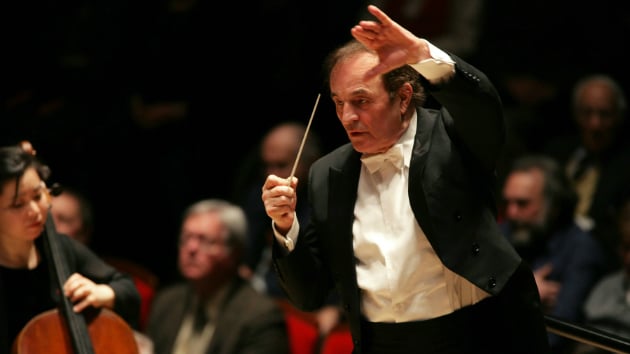
Maestro Charles Dutoit's frequent visits to San Francisco are always high points in the orchestral calendar here. Whether he conducts a visiting orchestra in the Great Performers Series, or is in town for a stint with the San Francisco Symphony, he brings meticulous music-making to his concerts. Dutoit’s first series with SFS, which ended last Sunday, was no exception.
Dutoit leads with casually controlled theatricality, and his stage demeanor always has an air of mischief - as if he is about to pull a prank of some sort. But the warmth between him and the orchestra is genuine and his program, as usual, was full of vivid contrasts.
The concert opened somewhat reservedly, with Stravinsky at his neoclassical best in Jeu de Cartes (The Card Game). Originally written in 1936 as music for a ballet by George Balanchine, the piece is inspired by Stravinsky’s love of poker, with three “deals’ instead of movements and the cards in the game as characters/dancers.
The music is a succession of playful vignettes, full of allusions to music from Beethoven, Johann Strauss, Ravel and Tchaikovsky — and even a direct quote from Rossini’s Barber of Seville.
The score moves at high speed through a multitude of character changes and stylistic variations, which Dutoit and the S.F. Symphony musicians handled with admirable precision and flexibility. They left enough open space for the comedic subtext of the music to shimmer through, but respectfully left Stravinsky’s neoclassical detachment intact. The score moves at high speed through a multitude of character changes and stylistic variations, which Dutoit and the S.F. Symphony musicians handled with admirable precision and flexibility.
Far less restrained was the impassioned reading of Edward Elgar’s introspective Cello Concerto in E minor, Op. 85 by the eminent French cellist Gautier Capuçon. With his warm, rich tone and dense vibrato, Capuçon walked a clear path between passion and sentimentality in the first two movements, and he saved his deepest thoughts for the meditative Adagio and the languid descending phrases of the plaintive soliloquy in the Finale.
After intermission, Dutoit conducted Mussorgsky’s Pictures at an Exhibition in the orchestral version that Ravel created in 1922. This is by far the most popular and most performed arrangement of this virtuoso piano suite, composed by Mussorgsky in 1874 to honor his deceased friend, artist and architect Viktor Hartmann.
It is never an unpleasant experience to hear Ravel’s version, but he converted much of the raw exotic power of Mussorgsky’s original piano suite into gorgeous layers of brilliant French Impressionism.
Ravel’s instrumentation is superb, and his colors are beautiful and lush, but Pictures at an Exhibition is more about Ravel than Mussorgsky.
That said, Dutoit’s interpretation was especially refined — as witnessed by the beautifully balanced climactic build up in “The Great Gate of Kiev”.
What certainly stood out in this majestic finale — and throughout the concert — were the winds and specifically the mighty brass section, which delivered excellent solos on trumpet and tuba.

